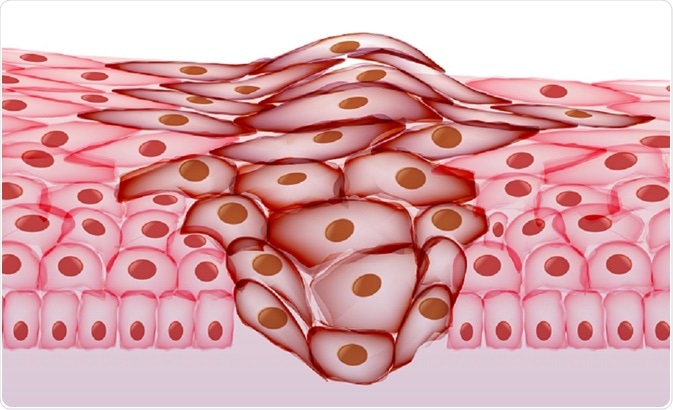Poly (ADP ribose) polymerase (PARP) inhibitors are novel anticancer agents that target the DNA damage response and DNA repair pathway. This exciting new class of drugs has emerged as an effective treatment strategy for BRCA-mutated ovarian cancers and metastatic breast cancer.

inbeve | Shutterstock
BRCA1 and BRCA2 genes produce tumor suppressor proteins which play an important role in DNA repair mechanism and help in ensuring the stability of genetic material of each cell. Mutations in these genes are a common cause for the development of various types of cancer like breast cancer and ovarian cancer.
PARP enzymes are another member of the DNA repair pathway and are involved in binding to single-strand DNA damage and initiating repair. PARP inhibitors exert their anticancer effect by inhibiting this mechanism of DNA repair.
PARP inhibitors utilize the concept of synthetic lethality to effectively kill tumors defective in the BRCA1 or BRCA2 genes. Synthetic lethality in this regard refers to the simultaneous presence of BRCA mutation and the use of a PARP inhibitor, which ultimately leads to cell death.
PARP-inhibitors: A New Generation of Cancer Drugs
Are PARP inhibitors safe?
Although rare, adverse events associated with PARP inhibitors include bone marrow suppression with neutropenia, anemia, and thrombocytopenia; gastrointestinal side effects; and fatigue.
Even though overlaps in toxicities have been observed for each of the approved PARP inhibitors, some marked differences have been observed among them. This is attributed to the difference in drug metabolism, starting dose and the extent of pre-treatment.
Combinatorial approaches for hard-to-treat cancers
PARP inhibitors and chemotherapy combinations
Combination therapy has been a cornerstone of cancer therapy; however mixed results have been generated in studies combining PARP inhibitors with chemotherapy. This is mainly due to the overlapping toxicities like myelosuppression. Much more research and efforts are required to better establish this challenging strategy.
PARP inhibitors and biologics
Another strategy being exploited is combining PARP inhibitors with biologic agents like VEGF inhibitors, PD-1/PD-L1 inhibitors, and CTLA-4 inhibitors. If successful, this could be a promising treatment strategy in both BRCA mutated (BRCAm) and BRCA wild-type cancers.
Perspectives
After making their mark in ovarian and breast cancer, PARP inhibitors are now being tested on a plethora of other cancer types. Numerous studies are being carried out in prostate cancer, pancreatic cancer, and melanoma. Positive responses from such trials will improve treatment options for these hard to hit cancers and pave the way for new horizons.
However, there are some challenges which surround this evolving class. One of the key tasks would be the identification of effective biomarkers to identify which patients will benefit from which therapies and combinations.
Another area of concern is the development of drug resistance; better understanding of the mechanisms underlying resistance will help develop better post-treatment strategies.
Nevertheless, the flurry of ongoing trials with PARP inhibitors could help address the many questions which surround this therapeutically promising class and change treatment outcome in hard-to-treat cancers.
Further Reading
Last Updated: Dec 3, 2018